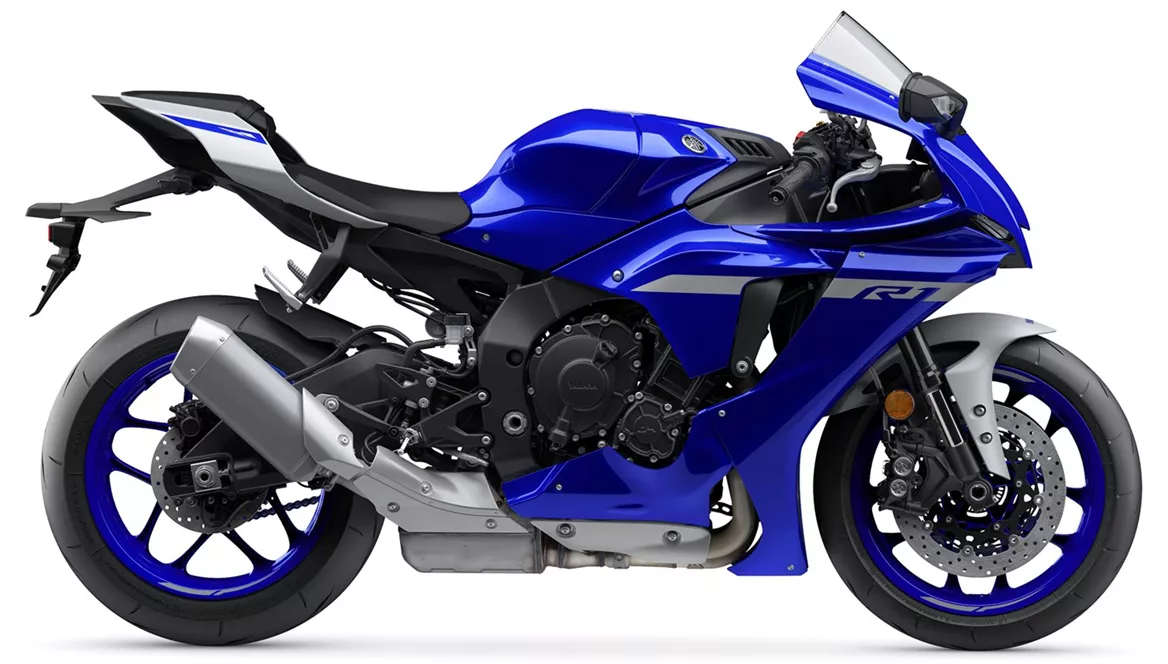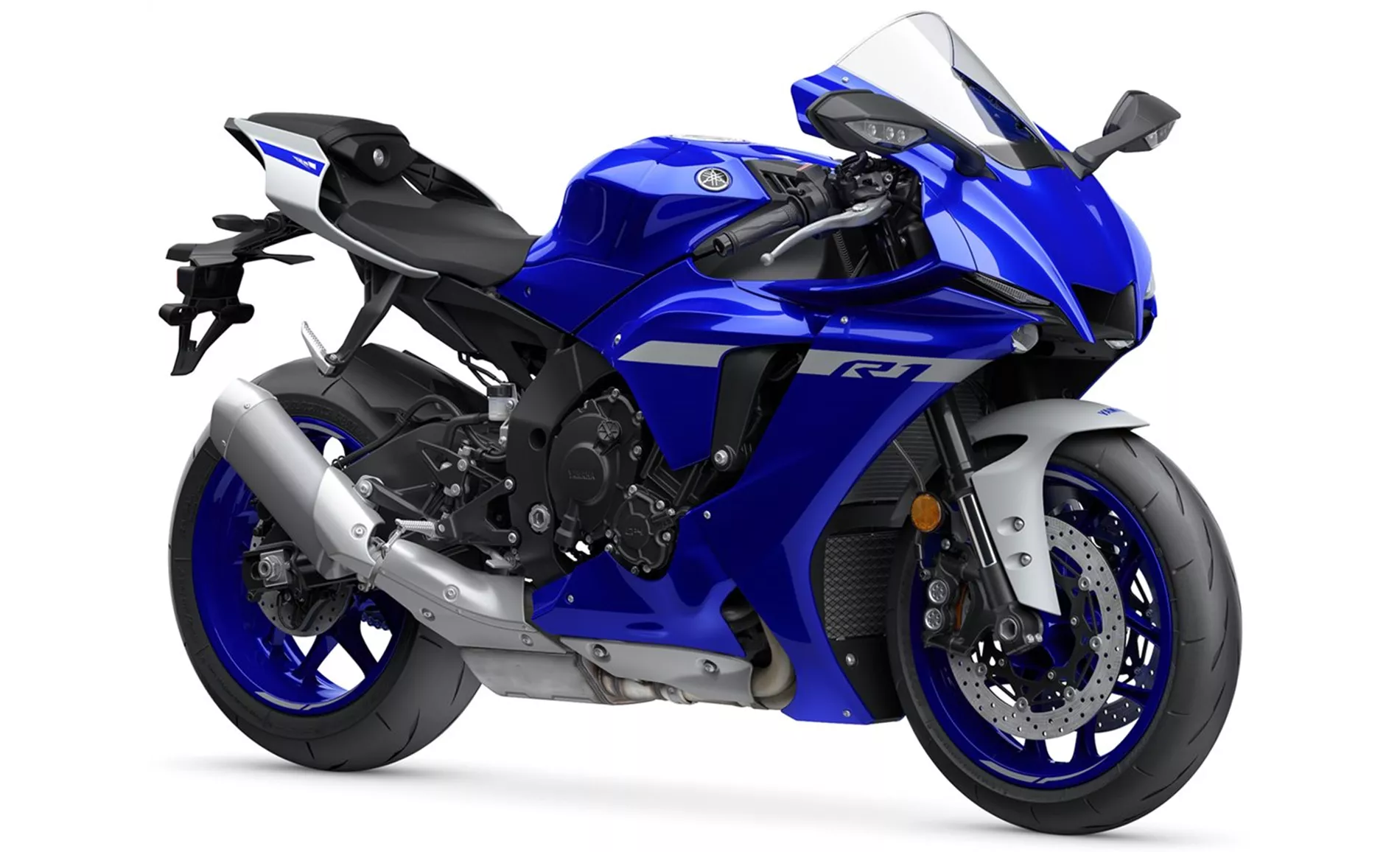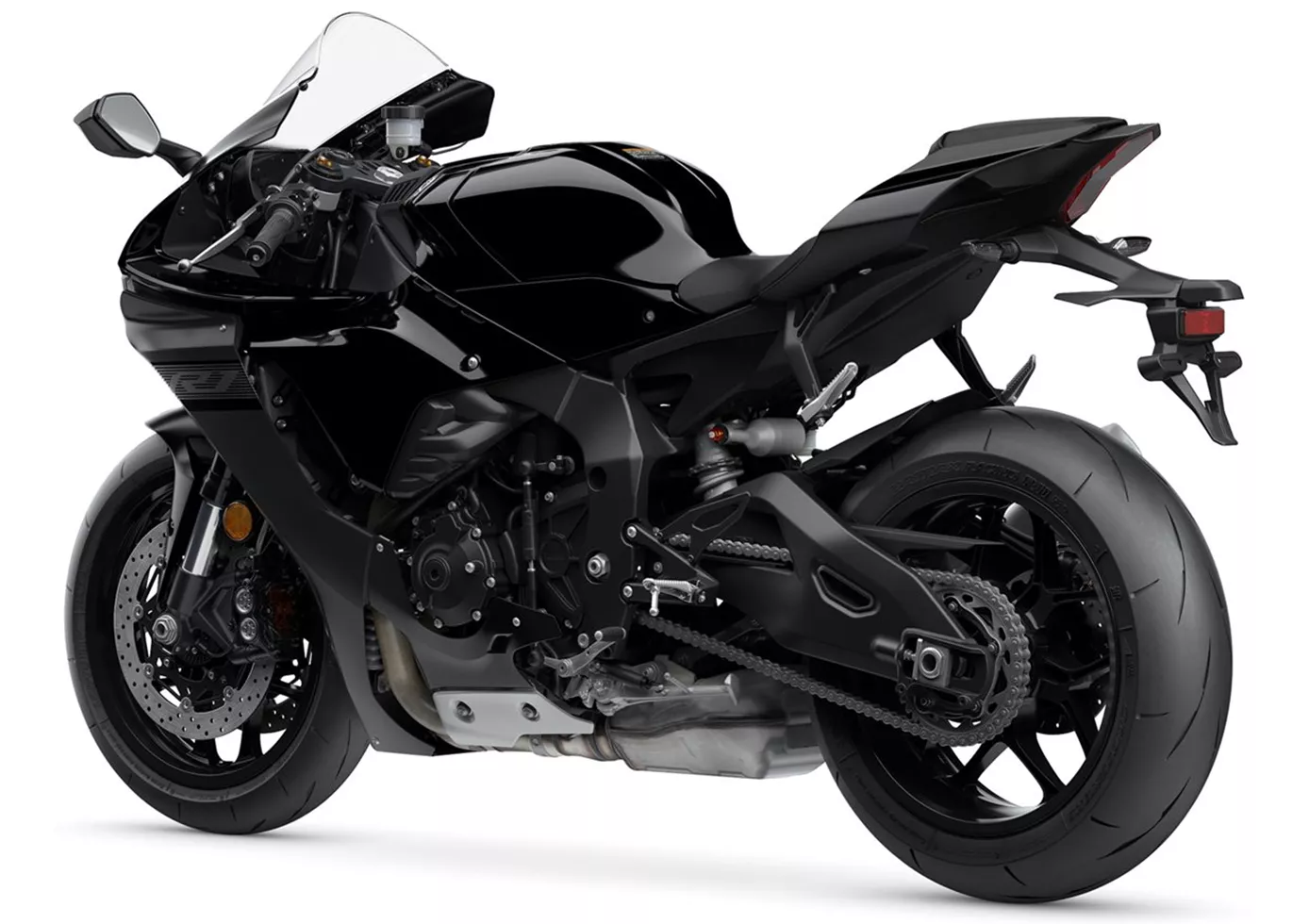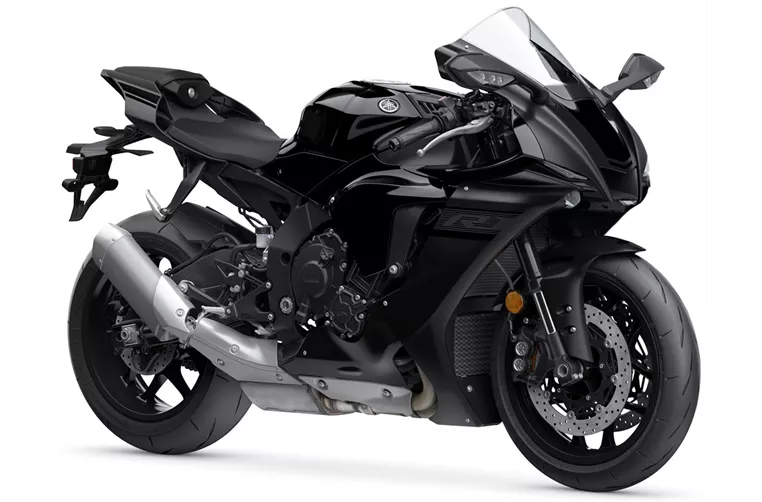Yamaha R1 2020 vs. Suzuki GSX-R 1000 2017

Yamaha R1 2020

Suzuki GSX-R 1000 2017
Visão geral - Yamaha R1 2020 vs Suzuki GSX-R 1000 2017
In terms of technical specifications, the Yamaha R1 2020 and the Suzuki GSX-R 1000 2017 have several similarities. Both bikes have a 4-cylinder engine with 4 valves per cylinder and a DOHC valve configuration. They also have similar displacements, with the Yamaha R1 at 998cc and the Suzuki GSX-R 1000 at 999cc.
However, there are some notable differences between the two models. The Yamaha R1 2020 has a slightly larger bore of 79mm compared to the Suzuki GSX-R 1000's 76mm. On the other hand, the Suzuki GSX-R 1000 has a longer stroke of 55.1mm compared to the Yamaha R1's 50.9mm. These differences in bore and stroke contribute to variations in power and torque outputs. The Yamaha R1 2020 produces 200 horsepower and 112.4 Nm of torque, while the Suzuki GSX-R 1000 2017 generates 202 horsepower and 118 Nm of torque.
Both bikes have high compression ratios, with the Yamaha R1 2020 at 13 and the Suzuki GSX-R 1000 2017 at 13.2. This high compression ratio contributes to their powerful performance on the road.
In terms of suspension, both models feature upside-down telescopic forks at the front, providing excellent handling and stability.

Yamaha R1 2020
When it comes to the chassis, the Yamaha R1 2020 has an aluminum Deltabox frame, while the Suzuki GSX-R 1000 2017 features an aluminum twin-spar frame. Both frames are known for their rigidity and stability, contributing to the bikes' overall performance.
Both bikes have dual-disc front brakes, providing strong stopping power. However, the Yamaha R1 2020 has been criticized for its brakes not being fully satisfactory on the race track. On the other hand, the Suzuki GSX-R 1000 2017 does not have adjustable engine braking, which can be a disadvantage for some riders.
In terms of dimensions and weights, the two models are quite similar. Both have a front tire width of 120mm and a rear tire width of 190mm, with a 17-inch diameter for both front and rear tires. The Yamaha R1 2020 has a slightly shorter wheelbase of 1405mm compared to the Suzuki GSX-R 1000's 1410mm. The Yamaha R1 also has a slightly higher seat height of 855mm compared to the Suzuki GSX-R 1000's 825mm.

Suzuki GSX-R 1000 2017
In terms of weight, the Yamaha R1 2020 weighs 199kg (with ABS) while the Suzuki GSX-R 1000 2017 weighs 202kg (with ABS). The Yamaha R1 has a fuel tank capacity of 17 liters, while the Suzuki GSX-R 1000 has a slightly larger fuel tank capacity of 17.5 liters.
In terms of strengths, the Yamaha R1 2020 is praised for its powerful engine, clean response, excellent sound, stable chassis, high-quality electronics, and overall premium feel. On the other hand, the Suzuki GSX-R 1000 2017 is appreciated for its high-revving engine, smooth torque curve, stability on corner exits and in the lean angle, excellent gearbox, high-quality chassis, and performance on fast tracks.
As for weaknesses, the Yamaha R1 2020 has been criticized for its brakes not being fully satisfactory on the race track. On the other hand, the Suzuki GSX-R 1000 2017 lacks adjustable engine braking, which may be a drawback for some riders.
Overall, both the Yamaha R1 2020 and the Suzuki GSX-R 1000 2017 are high-performance supersport motorcycles with their own strengths and weaknesses. The choice between the two would ultimately depend on the rider's preferences and priorities.
Especificações técnicas Yamaha R1 2020 em comparação com Suzuki GSX-R 1000 2017
Prós e contras em comparação
Prós e contras em comparação
Yamaha R1 2020

A Yamaha YZF-R1 está madura e faz a felicidade de inúmeros pilotos de pista. O motor brilha com leveza e agilidade, a posição do assento surpreende positivamente e o manuseio é radical, mas ainda "adequado para as massas". A máquina imediatamente se destaca visualmente e também por causa do som de aquecimento do coração. Especialmente na estrada rural, a moto pontua com os seus pontos fortes bem conhecidos: grande motor, grande eletrónica, grande pacote! Um verdadeiro prazer de conduzir!
Suzuki GSX-R 1000 2017

A Suzuki fez um excelente trabalho com a GSX-R 1000 2017. Uma moto super-forte com uma curva de binário fabulosamente suave. Realmente inacreditável com 202 cv! O chassis é de alta qualidade e o pacote eletrónico não tem nada de especial, mas proporciona um desempenho de topo.
Comparação de preços Preço médio de mercado Yamaha R1 vs Suzuki GSX-R 1000
There are a few key differences between a Yamaha R1 2020 and a Suzuki GSX-R 1000 2017. There are the same number of bikes of both models available on the 1000PS.de marketplace, specifically 9. It takes less time to sell a Yamaha R1 with 86 days compared to 121 days for a Suzuki GSX-R 1000. Since model year 2005 1000PS.de editors have written 80 reviews for the Yamaha R1 and 71 reviews for the Suzuki GSX-R 1000 since model year 2005. The first review for the Yamaha R1 was published on 28/04/2003 and now has more than 3.900 views. This compares to more than 7.100 views for the first review on Suzuki GSX-R 1000 published on 03/03/2004.






















